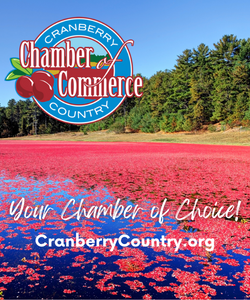By Douglas Karlson
If you’ve gone for a walk and noticed a small colorful stone with a message painted on it, and it lifted your spirits, you probably have Megan Murphy to thank.
Murphy is the founder of the Kindness Rocks Project, a simple idea that started on a solitary walk on Sandy Neck Beach in Barnstable, and has spread around the world.
It’s a movement that encourages people to leave rocks with inspirational messages to be found by passerby. The messages, like “Don’t give up!,” or “Grief is love’s souvenir,” are intended to soothe and encourage. Since its beginning four years ago, the project has spread around the world, and been embraced by uncounted thousands of people and many thousands of local “rock groups” that have followed Murphy’s lead.
Ironically, through Murphy lives on Cape Cod, until four years ago, she rarely took the time to walk on the beach. She was too busy with her successful fashion jewelry business. But something was missing.
“I felt uninspired when I woke up in the morning,” she recalls. What was more, she realized that while in her twenties, being so busy starting both a business and a family, she had never properly grieved for her parents. They had died when they were both just 61 years old, her mother succumbing to breast cancer, and her father to a heart attack.
Seeking a new direction, Murphy decided to sell her share of her business to her partner.
“I began walking the beaches,” she says. “I was on a journey to find joy again, where I could wake up in the morning and feel inspired and excited about my day.”
During these long solitary introspective walks – typically about six miles a day – she began communing with God, and with her parents, looking for signs.
She would often find heart-shaped rocks or sea glass that would remind her of her parents, and she would feel supported. “Like someone was listening and guiding me,” she says. “This process is very interesting because I realized it’s not coming from outside of me. It’s just reminding me that the answers I was looking for reside within.”
Noticing that there were others walking the beach, she decided to leave encouraging messages. “It dawned on me that maybe they’re going through something difficult too. And maybe this could help them. Seeing that these were little messages that made me feel happy, I thought, Maybe I could facilitate a similar experience for other people,” she says.
Murphy collected five rocks, wrote five messages on them with a Sharpie, and dropped them along a mile-and-a-half stretch of Sandy Neck Beach.
“Lo and behold one of my friends found one of them, which is really a needle in a haystack,” she says. Her friend suspected Murphy had written the message, and texted her to ask.
Murphy told her friend she hadn’t.
She was reluctant, she says, because “it’s sort of an odd thing for a forty-something-year-old to be doing. Going from a successful business to aimlessly walking the beach writing messages on rocks is kind of a leap. People might think that person’s crazy.”
Her friend replied, “Well if it was you it really helped me out today, so thanks.”
Had she not received that text message from her friend, she’s not sure she would have continued, Murphy says.
But continue she did.
She began painting and dropping thousands of rocks each week. She posted images on social media, and her daughter suggested she use a hashtag on the rocks so people could connect her messages to a burgeoning presence on the Internet. Soon people were reaching out asking how they could get involved.
She began receiving so many questions she created a website with information about how to paint rocks to where there were local groups people could join.
Her website, TheKindnessRocksProject.com, includes maps showing the locations of thousands of rock groups, curriculum for schools (painting rocks satisfies a social emotional learning requirement), and links social media platforms like Facebook, Twitter, Instagram and Pinterest. Murphy also posts a photos of the “rock of the day” and shares articles that have been written about the project.
Murphy encouraged people to make their own rocks. She told them how to make a social media page and spread the word. The movement went viral. It was completely unplanned.
The Kindness Rocks Project now has 100,000 followers on Twitter. But that’s just a fraction of the people influenced by the project. Murphy says that many more people belong to other rocks groups, which are regional in nature, as people tend to join groups that are located nearby. She says she recently visited a group in the Midwest that has 25,000 followers.
These rock groups meet to paint rocks and often support a specific charity. They’re listed in a digital database on the Kindness Rocks Project website. According to Murphy, there are so many rock groups, some as far away as Australia and India, that her first two databases crashed.
On the Facebook page, Megan also shares people’s stories, which she says are similar to the Internet’s popular “Humans of New York.” Murphy is now working on a book that includes many of those stories.
On a typical day when she’s not traveling to give inspirational talks to at schools, companies and other organizations, Murphy is up at the crack of dawn responding to messages, writing articles (she’s a freelance writer for Huffington Post and Buzzfeed), and posting on social media. Then she paints rocks and goes on a two-hour walk on the beach, often listening to a podcast as she walks.
Back at her house, she mails out packages of curriculum to schools, then spends a few hours writing and answering more messages. To help her in her work, she has also signed up 150 ambassadors. She was inspired to do this after being chosen by O Magazine as one of the country’s top 50 influencers.
Rather than thousands, she now paints about 50 rocks every week, dropping five or six on her daily walks on Sandy Neck Beach.
“I do it because it’s therapeutic,” she says.
The words on the rocks might be lyrics from a song, a quote from a famous person, or a personal reflection – a message that she herself needs. Since starting the project, Murphy says she’s probably only duplicated a rock ten times.
Her life is no less busy that before. Perhaps it’s even busier, though more satisfying. “It’s making a difference in the lives of so many,” says Murphy.


























